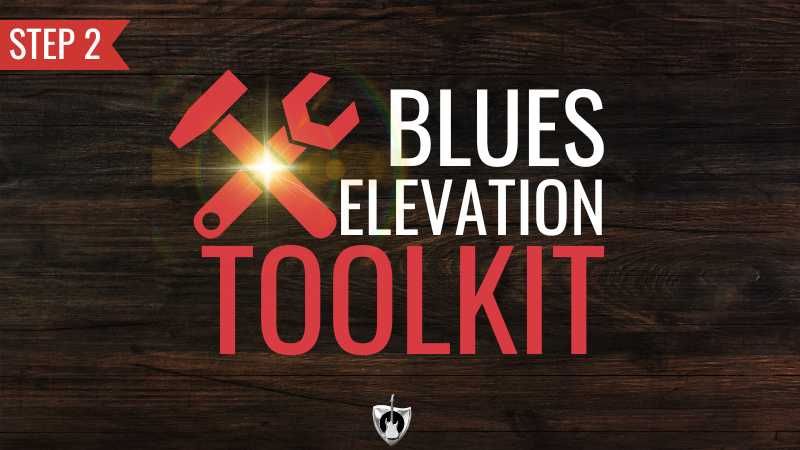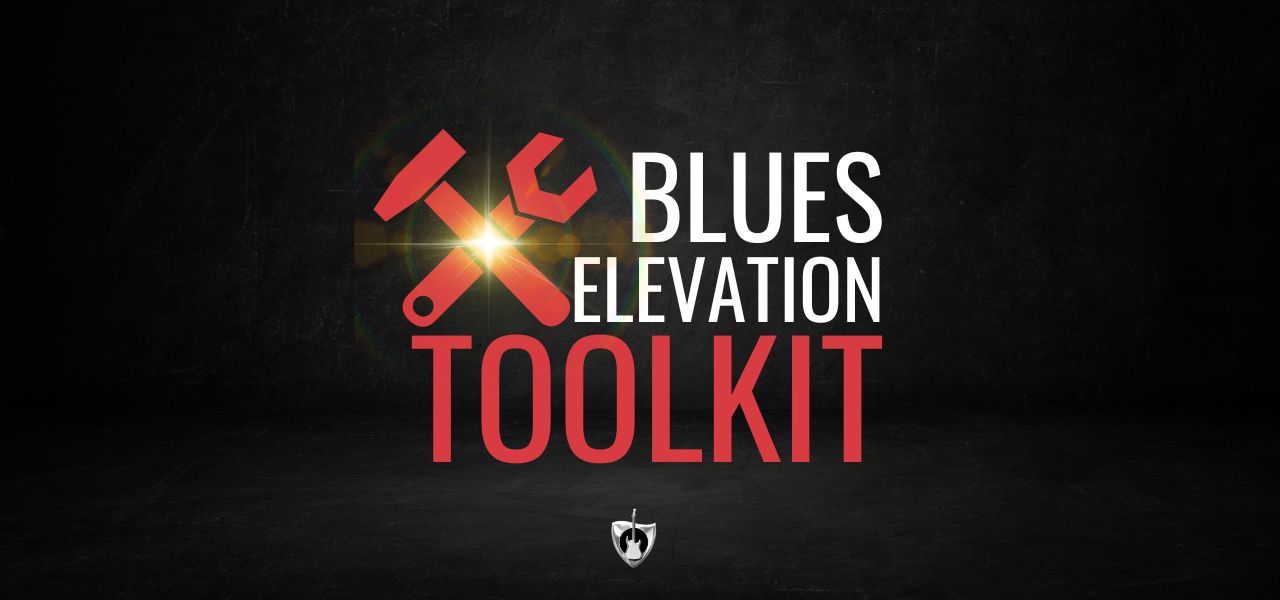Low Gain Lead Tones - 141
Today I go over how to build and use three awesome low gain lead tones.
When you think of lead guitar, distortion comes to mind. But, some of the most popular lead guitar solos have used clean to very light gain tones.
Mark Knopfler, John Mayer, David Gilmour, Stevie Ray Vaughn.... The list could go on and on. These fantastic guitarists know how to build a great guitar tone.
The thing is, if you listen to a lot of their music, it's not all full out drive. A good percentage of their classic solos use less than dirty tones.
Once you are up and running, cranking up the distortion and adding an overdrive pedal in front of it becomes the go to. It gets easy.
It can be very difficult to find a tone that gets your point across, fills the sonic space, and features your skills when you don't have the crutch that hides a lot of unflattering mistakes.
What I'd like to do today is build three different low to no drive tones and show the tips and tricks of how to make them sound great.
Clean Lead
It is what is says: Clean. Just the clean sound of your amp. No drive, gain, distortion, fuzz, whatever you want to call it. It's the bottom floor of your tone and other than strumming a few chords, it doesn't get used too much by most lead players
Volume The number one property of a good clean lead.
It has to be featured. In a band situation, your level for rhythm guitar is not going to cut it. The single notes of a clean lead will get lost.
You need to have a way to get up and over the rest of the instruments and put yourself out front.
With distortion it is natural for the level to jump up a bit, but for clean you have to think ahead.
There are two ways to make this happen.
The first is to set your amp to the highest volume you will need.
Not the maximum volume, but just how much you will need to peak out over the band.
"But, won't that make my rhythm guitar too loud. ... Yes it will.
All you have to do is use the old volume knob on your guitar or a volume pedal.
Roll it back to normal volume and then dial it wide open for the leads. It sounds simple but you would be surprised at how many have a hard time with this.
It must be natural for guitarists to turn everything up and run on 10 all of the time. Then, the thinking is "I'm going to need some sort of pedal to get louder.
This is also a good idea for dirty tones as well. The lower the output from your guitar, the less distortion comes through.
The second is to push the amp with some sort of clean boost. For clean, a boost pedal in the effects loop is the best idea. It just gives the power amp of your amplifier more to amplify.
It doesn't slam the front end of the amp, and rob you of the next topic we need to be concerned with:
Headroom
Headroom is how much volume you can pump into something or how loud you can crank our amp before it starts to distort.
If you try to boost your amp with a pedal into the guitar input of your amp, you may start to hear some distortion. This isn't necessarily a bad thing, just not what you are trying to get now. Higher wattage amps tend to have more clean headroom than smaller ones.
Compression
One thing that distorted guitar sounds have all over clean ones is compression. When you distort a guitar signal, it clips. It cuts the peaks off of the loudest wave forms. This makes the peaks quieter and closer in volume to the quieter sounds. It crunches the waveform and gives you a added bonus: perceived sustain. You don't hear how drastic the volume drop is from the attack of a note to the end. It all sounds very even.
This is important because when you need to be the focus of attention and you are needing to be heard over the other instruments, compression keeps all of your playing at a similar volume and out front.
Clean amps usually don't have a lot of compression. But, don't worry, there is an easy fix for this. The compressor.
Mark Knofler and David Gilmour are masters of using compression on clean guitars to give the impression of lots of sustain but still remaining clean.
Delay/reverb
The last thing that is usually used to dress up a clean lead guitar sound is delay and reverb. These effects put the guitar in a space. You can think of Delay as the smack against the closest wall and reverb as the sound of the whole room.
Making sure to place the clean lead is pretty important to adding interest to a relatively normal guitar sound.
On the Edge
The next step up from the clean lead is playing on the edge of breakup. This sound is very interesting because you are getting the best of both worlds. Having a tone that is sometimes clean and sometimes dirty is very expressive and interesting.
Being able to do this without having to stomp on a pedal to change sounds makes things super easy and expressive.
Touch sensitive
Setting your amp or pedals on the edge of breakup so that when you pick light you get a clean sound, and when you pick with a heavy strong attack, your tone starts to saturate and distort.
Players say that they don't have to think with a tone like this, they just have to feel. You can get all sorts of emotions out of your guitar just from your guitar pick.
There are two ways to do this as well by setting up your Amp or your pedal.
If your amp has some sort of d rive channel, this becomes easy. Just turn the drive channel down, start playing and turn it up until you hear a slight breakup in your playing. Then try it out.
If your amp doesn't have a drive channel. You could push your amp to distort with a boost pedal until you hear the same thing. The problem with this depends on how loud your amp is when you push it.
To get this without a ton of volume, use an overdrive pedal like a Tubescreamer, blues driver, or Klon Centaur clone, to simulate the very light amp gain and set the output to the desired volume.
Still want to be heard
Even with this light bit of overdrive, you still have to be conscious about your overall volume. You still are competing with the whole band during a solo.
A lot of players set their amps rhythm volume at this breakup point. You then just have to roll down your volume on the guitar for clean, full up for low gain lead, and then boost with an overdrive pedal for your dirty lead sound.
Compression
One thing that distorted guitar sounds have all over clean ones is compression. When you distort a guitar signal, it clips. It cuts the peaks off of the loudest wave forms. This makes the peaks quieter and closer in volume to the quieter sounds. It crunches the waveform and gives you a added bonus: perceived sustain. You don't hear how drastic the volume drop is from the attack of a note to the end. It all sounds very even.
This is important because when you need to be the focus of attention and you are needing to be heard over the other instruments, compression keeps all of your playing at a similar volume and out front.
Clean amps usually don't have a lot of compression. But, don't worry, there is an easy fix for this. The compressor.
Mark Knofler and David Gilmour are masters of using compression on clean guitars to give the impression of lots of sustain but still remaining clean.
Delay/reverb
The last thing that is usually used to dress up a clean lead guitar sound is delay and reverb. These effects put the guitar in a space. You can think of Delay as the smack against the closest wall and reverb as the sound of the whole room.
Making sure to place the clean lead is pretty important to adding interest to a relatively normal guitar sound.
Light Overdrive
Using an overdrive pedal is by far the most common way to get a good lead sound. You can dial in the amount of distortion you want with the drive knob, adjust the tone of your lead sound, and adjust the overall volume with the output knob.
Super easy and sounds great.
This form of low gain lead tone will usually have a solid light breakup.
It usually sounds like either a different amp or a different channel on your amplifier.
The lower amount of distortion usually doesn't cover up your tone too much and you can hear the nuances of your guitar.
You get the sustain from the light distortion and can pick from a ton of different drive sounds just by adding a new pedal.
But even the heaviest of metal pedals all have a drive knob. Take the one you have and turn that drive knob down and see how it sounds.
Mids or no Mids
The thing I usually am concerned with when using overdrive pedals is if they have a mid hump or not.
This needs to match your amp. If you have a fender amp that has a very scooped sound (light mids) a pedal that has a mid hump will fill out your tone nicely for solos.
But, If I'm using an amp that has a lot of mids already some Marshalls for example, I may or may not use something that adds even more mids to the tone ( like a blues driver).
GET FREE WEEKLY GUITAR LESSONS, PODCASTS, AND MOTIVATION DELIVERED TO YOUR INBOX.
Your information is kept safe. It's never shared with third parties.




